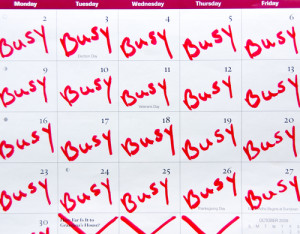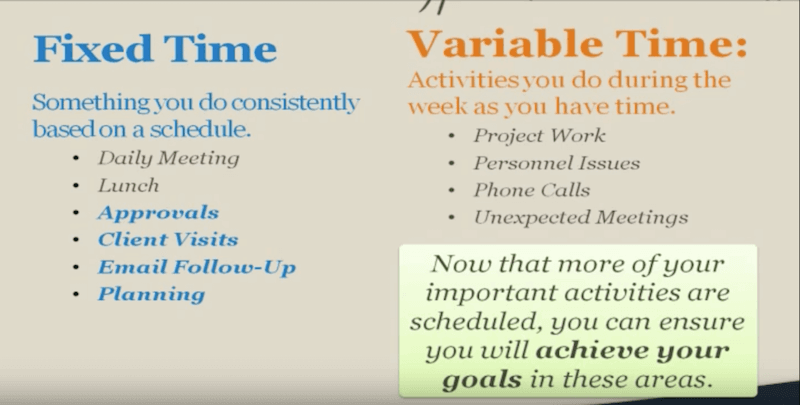 One of the most common issues that we all face today – regardless of our field, age or stage in our career is an epidemic of not having enough time. Our schedules at home and at the office can easily become overly packed with too many items. While this frenetic pace that we all seem to share can feel overwhelming or even impossible, there are certain ways to address your schedule in a way that ensures that you complete the most important things each week, and approach the items and tasks that you need to in a way that is consistent and manageable. The key to time management is to accept that we only have a fixed number of hours each day, each week and each month. Even with all of today’s cutting edge technology and advances in modern science… we can’t create more time. So once we accept the fact that we need to accomplish our tasks and goals within a certain framework, we must plan accordingly.
One of the most common issues that we all face today – regardless of our field, age or stage in our career is an epidemic of not having enough time. Our schedules at home and at the office can easily become overly packed with too many items. While this frenetic pace that we all seem to share can feel overwhelming or even impossible, there are certain ways to address your schedule in a way that ensures that you complete the most important things each week, and approach the items and tasks that you need to in a way that is consistent and manageable. The key to time management is to accept that we only have a fixed number of hours each day, each week and each month. Even with all of today’s cutting edge technology and advances in modern science… we can’t create more time. So once we accept the fact that we need to accomplish our tasks and goals within a certain framework, we must plan accordingly.
When it comes to time management – particularly in the case of a CEO, it’s important that you review how you currently spend your days. It is highly likely that the events that fill your day fall under two main categories, fixed time and variable time.
The Power of Fixed Time
As its name suggests, fixed time refers to events or activities that happen regularly, for a defined amount of time. Perhaps you have a meeting with employees everyday from 9:30am to 10:00 am. Or you have lunch from noon to 12:45pm. These are events that are easy to account for, and very helpful from the perspective of time management – because they are expected.
The Disadvantages of Too Much Variable Time
But the other items on your itinerary may fall under the second category, of variable time. Agenda items like this are difficult to plan for because they are inconsistent in frequency and duration. Everything from client visits to personnel issues, phone calls, email follow ups, planning and of course unexpected meetings can drain time from your schedule. Additionally, these kinds of unexpected issues always seem to demand attention and act as a priority, even if this is not truly the case. They essentially act as random disruptions throughout the day.
Keeping this in mind, the objective in auditing your daily calendar is to move agenda items from variable to fixed times. There are a few ways to go about this.
 Gain Control and Reduce Variable Time
Gain Control and Reduce Variable Time
When it comes to things like answering emails or scheduling phone calls – be particular about your availability. Choose to respond to emails or take calls at particular points throughout the day, so they don’t interrupt you when you are in the middle of something else. Additionally, consider using the parking lot system. When an unexpected issue (that isn’t an emergency) comes to your attention, instead of responding to it immediately, write it on a post it, or add it to a designated list. And going forward, designate a certain amount of time to these sorts of unexpected things that come up. Block out 2 to 3 in your calendar everyday, and let that be the time that you devote to these kinds of activities. While the hour that you allot for this may not be enough, it’s a start, and helps shovel these kinds of unexpected events into a sort of “standardized chaos”.
Don’t Be Afraid To Re-Prioritize Throughout the Day
Another habit that I would recommend is to continuously prioritize and re-prioritize your objectives and tasks for the day. Remember that something that was important yesterday may be less important in relation to what you need to complete today. Therefore, you should not follow “to-do” lists blindly. Instead, make a point to re-prioritize regularly.
For more tools to help you accomplish your goals, visit my collection of apps and services here.

